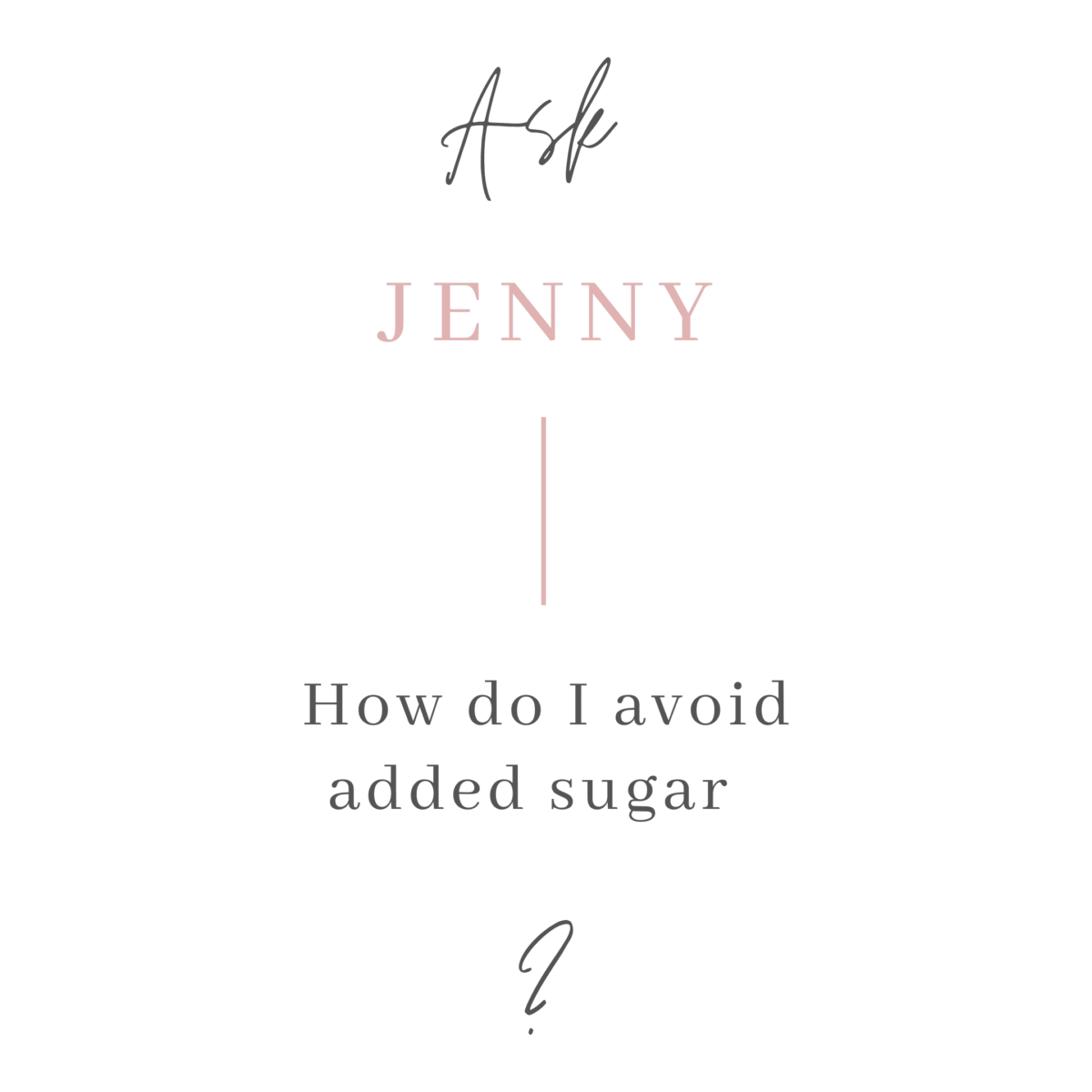
Ask Jenny: How Do I Avoid Added Sugar?
“I’ve been told by my doctor that I need to lose 25lbs, and that I should be limiting foods that have added sugar. Food labels are so confusing, can you help?” – Lauren, NYC.
Hi Lauren, and thank you for your question. Your doctor is right, removing added sugars is one of the most effective ways to lose weight, and reducing your sugar intake can also prevent cancer, prevent chronic disease (including Type 2 diabetes, stroke and Alzheimer’s), increase your energy level, improve mental health, prevent premature aging, boost your immune system and improve gut health.
Eating sugar leads to weight gain in four ways:
- it is high in calories, and devoid of micronutrients
- it triggers reward responses in the brain which makes you want to eat more
- it is digested and absorbed before it can release hormones that trigger satiety
- sugar releases the hormone insulin, which instructs the body to increase fat storage
The American Heart Association recommends that women limit their sugar intake to 25 grams a day (the equivalent of 6 teaspoons, or 100 calories). However, sugar has no positive health benefits, a myriad of negative health benefits and in my opinion has no place in the regular diet of someone who is food secure (I tell my Private Coaching clients that sugar is for birthdays and holidays only). If weight loss is your goal then removing sugar is key.
How to Avoid Added Sugars
The simplest way to avoid added sugars is to eliminate processed foods from your diet, as over 95% of processed foods contain added sugars in some form. However, this is not always easy or practical.
We know that there are added sugars in foods such as candy, soda, baked goods, etc, but its easy to be fooled by foods that you wouldn’t expect to have added sugars, such as low fat yoghurt, sauces, fruit juice, granola, ready meals etc. Even so-called healthy foods can be sneaky sauces of added sugars, and so the rule of thumb is ‘if it has a label, read it’.
How to Read a Food Label
If you think reading food labels is tricky, you are not alone. Food manufacturers make these deliberately misleading, so here are some simple tips to read between the lines and find out what you need to know (in Lauren’s case, how much sugar is in her foods). There are three things you should be checking when reading a food label:
1. Check the Serving Size
In an ideal world, servings sizes would be standardized across categories of food, such as cereal, bottled drinks and ready meals. But they are not. I have 3 cereal labels in front of me, and 1 serving is a different amount for all of them (1/2 cup, 3/4 cup, 1 cup). And let’s be real – who eats 1/2 cup of cereal at a time? In fact, studies show that the majority of people misinterpret food labels, and that obese women were the most likely to fall victim to misinterpretation.
2. Check the Amount of Sugar
The nutritional panel will state many grams of sugar the product provides. In an ideal world this would be none, but we know that most processed foods contain some type of added sugar. Keep this as low as possible, and definitely avoid anything with over 6g of sugar per serving.
3. Know the Names of Added Sugars
Underneath the nutritional panel will be a list of ingredients, from the highest quantity to the lowest. Whilst names such as cane sugar and high fructose corn syrup are familiar to us, added sugars can be hidden under a variety of names. There are 3 main types to look out for:
- Familiar names for sugar: white, brown, cane, raw, confectioners, high fructose corn syrup (HFCS), malt, refined.
- So called ‘healthy sugar’s (they still have all the negative health effects of sugar): agave, coconut nectar, date sugar, maple sugar, maple syrup, honey, fruit juice, cane juice, molasses, rice malt, sorghum syrup, treacle.
- Technical names (anything that ends in an ‘ide’ or an ‘ose’): dextrose, fructose, lactose, maltose, galactose, sucrose, ribose, saccharose, glucose, monosaccharide, disaccharide, polysaccharide
References:
https://www.sciencedirect.com/science/article/pii/S0149763407000589?via%3Dihub
https://journals.sagepub.com/doi/10.4278/ajhp.130117-QUAN-30
My Lean and Clean Program is designed for those who wish to quit sugar and lose weight. For more details on this program click here.
I’m a Holistic Nutritionist working in Boston, New York and London, and every week I answer one of your most pressing questions on gut health, weight loss, hormone balance, better sleep and more! Submit your questions to hello@jenniferhanway.com to have them answered on the site.
Helping
High-Achieving
Women Create
Optimum
Health
home
about
private coaching
The Metabolic Beauty Reset
corporate wellness
blog
privacy policy
terms & conditions
contact
© 2021 Jennifer Hanway, llc | All Rights Reserved | brand + website by high Moon studio
Programs